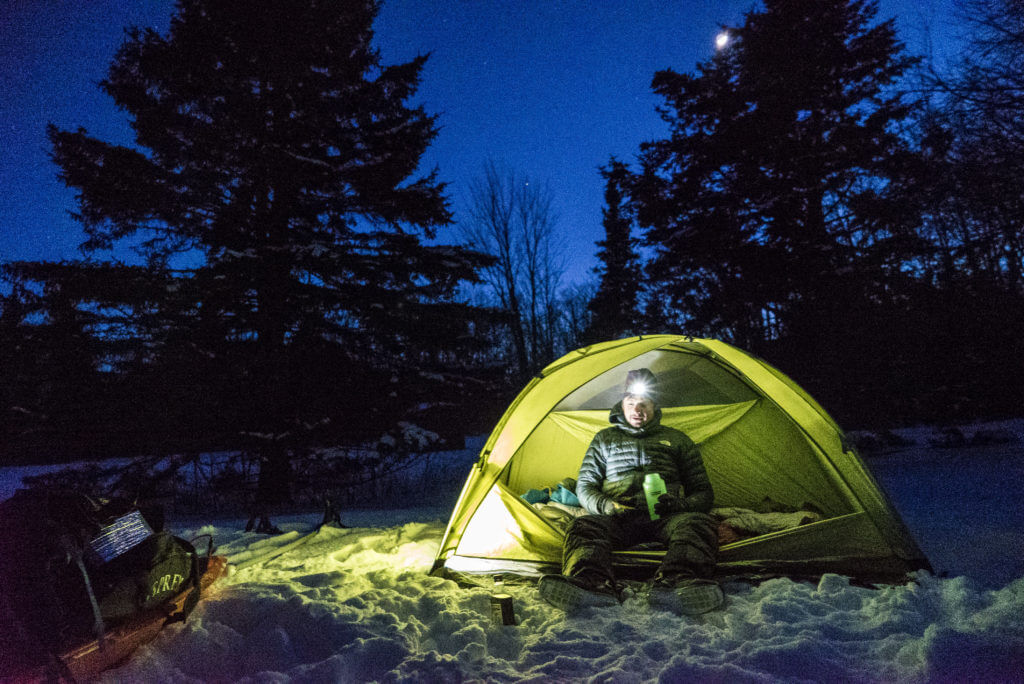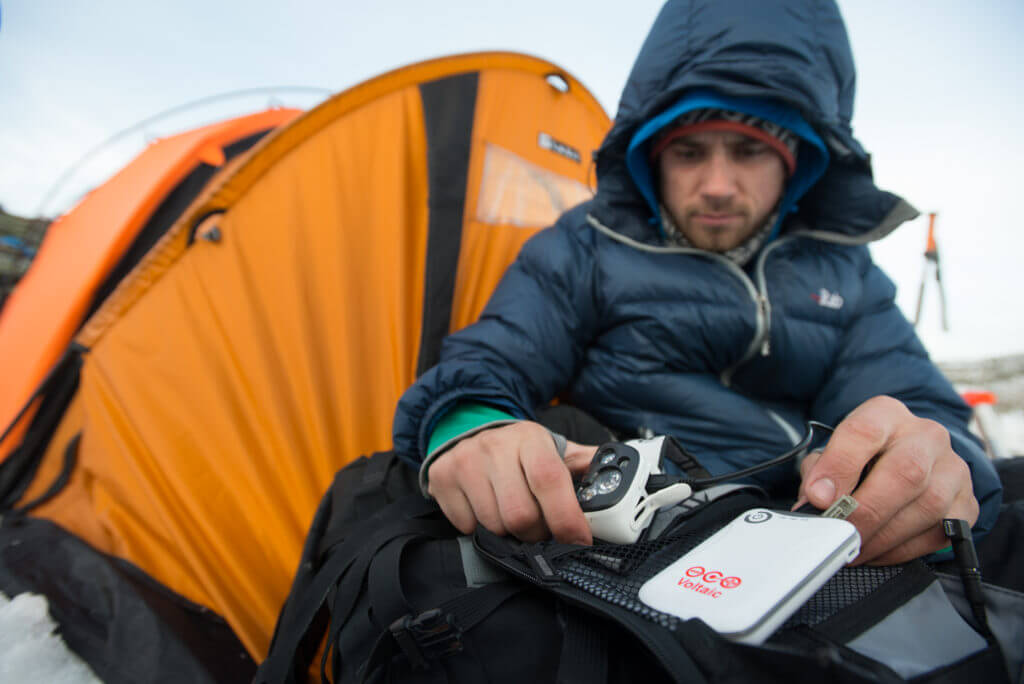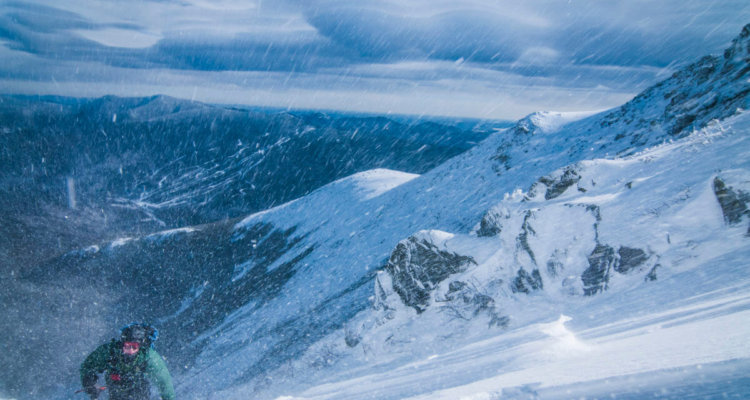How To Keep Camera Batteries Warm
Keeping camera batteries warm in cold weather will increase the number of photos you can take. We asked several of our photographers who work in cold places how they maintain temperature and a charge on their batteries. Batteries, especially the rechargeable Lithium Ion batteries used in cameras, show a remarkable decrease in capacity when used in below freezing temperatures.
Know Your Camera in the Cold
Different cameras may exhibit different cold weather performance. Brian Threlkeld, a Portland Maine based photographer, has experienced times where he has put in a fresh battery in his Sony a7ii and watched it go to 5% after a few clicks of the shutter. Knowing this before a big shoot, he can be better prepared.

Brian captures a team member during their winter circumnavigation around Mt Katahdin in Maine.
Bring More Batteries
Joe Klementovich (photo credit for top image!) is a photographer based is New Hampshire and recommends simply bringing more batteries than usual because they eventually “drain faster no matter how warm you store them.”
Use a Fanny Pack under Outer Layers
Joe was recently photographing in -10 degree days around Mt. Washington. His trick is to use a small fanny pack next to his body and underneath his down jacket or fleece layer. He keeps drone and DSLR batteries there instead of a pocket as it is easier to locate and is a consistent place to find the batteries no matter what layer he has on.

A great photo by Joe Klementovich, but we recommend charging inside a pocket or sleeping bag for maximum power transfer in cold weather.
Use the Inside Pocket
If you don’t have a fanny pack, be sure to use an inside instead of an exterior pocket. Brian keeps his spare batteries close to his core and swaps them into the camera whenever one drops to low. After a few minutes next to his body, the battery that read 5% is ready to use again. “It’s kind of like I’m playing a trick on my camera, or the other way around.”
Bruce Wilson, a videographer from Utah, also favors an inside pocket. He says, “camera batteries die quickly in the cold, they could easily go from 20% power to zero in seconds.” He adds that prior to starting the hike, he puts the batteries near the car heater so that they start off warm.
Recharge at Night in Camp
Brian doesn’t bother recharging batteries during the day. He insteads recharges them in his sleeping bag of his V44 or V72 battery pack (now available as our V88 Laptop Battery). The batteries then spend the night inside a stuff sack inside the sleeping bag. “That way when I wake up in the morning, I can put a warm battery in and snag those authentic camp shots of people getting out of their down cocoons without missing a beat.”
Justin Packshaw had similar tactics in Antarctica where the average temp was -34 Celsius. They recharged their cameras, Phantom 4 drone and sat phone at night inside the sleeping bag.

Charging drones, phones and communications gear in Antarctica
Hand Warmers?
No photographers we talked with used the chemical hand warmers for fear of damaging the batteries.
Any other tips for cold weather? Let us know in the comments. Need a photographer that thrives in the cold? Talk to Joe, Brian or Bruce.
Also, be sure to read our complete guide on how to charge cameras from solar panels.


What does this say about electric car batteries ??
They have some sophisticated ways to deal with this – I believe in part by using heaters.
Keep your batterys in a pocket of a heated vest
Last winter in the Alps, drone batteries refused to charge despite a bright sun (100W flexible solar panel).
After reading the manual, DJI phantom drone batteries won’t charge if temperature is near 0°.
Great article
Yes, charging below freezing can shorten the life of the battery. A slightly different topic, but we’ve found that DJI batteries can be tricky to charge from low power or non-consistent power sources. We walk through each of the DJIs in this post – https://blog.voltaicsystems.com/powering-the-dji-phantom-drone-from-solar-power/
Great article! I first discovered the “cold-battery-drain” problem while out near Gerlach, CA in October. Got down to 20F at night. I woke up to a dead phone and dead batteries for my drone, camera, etc. Unfortunately, couldn’t get any photos that following day. On my next trip, I was thinking about wrapping all of the batteries up in a thick towel, and then sticking them into a soft-shell cooler. I may opt for the sleeping back method instead though.